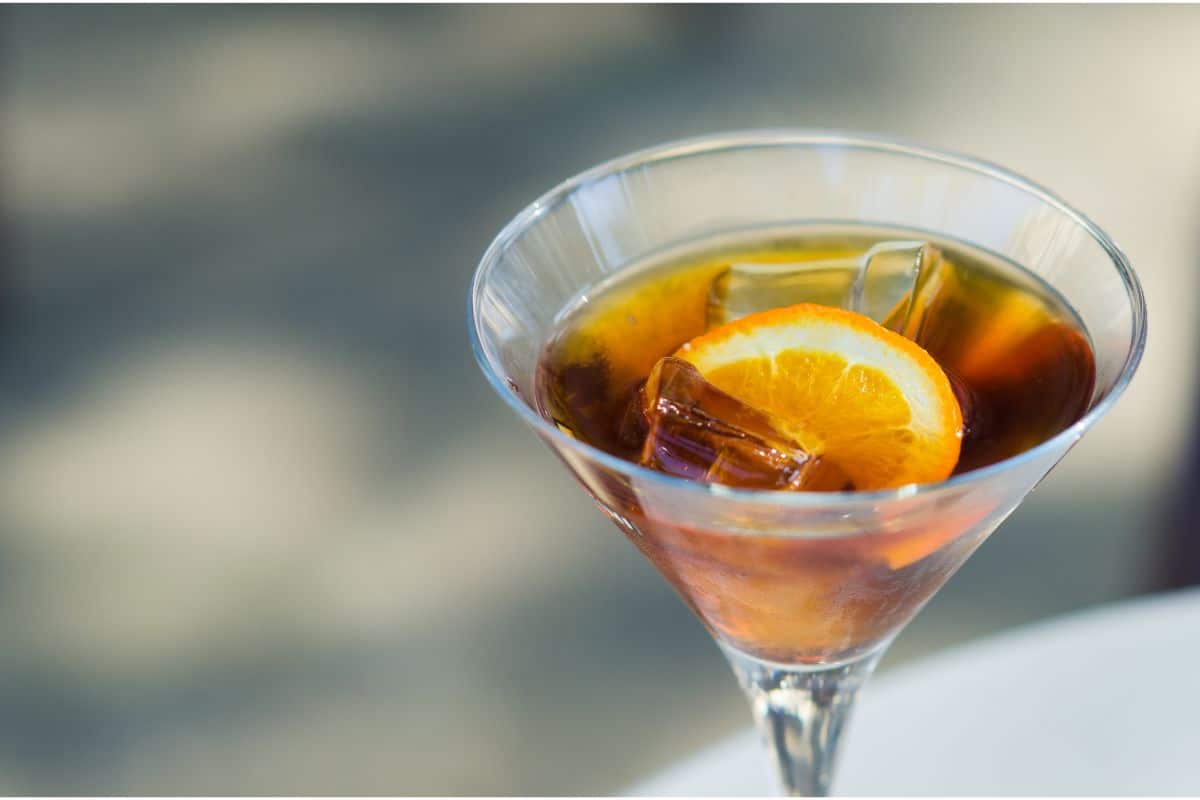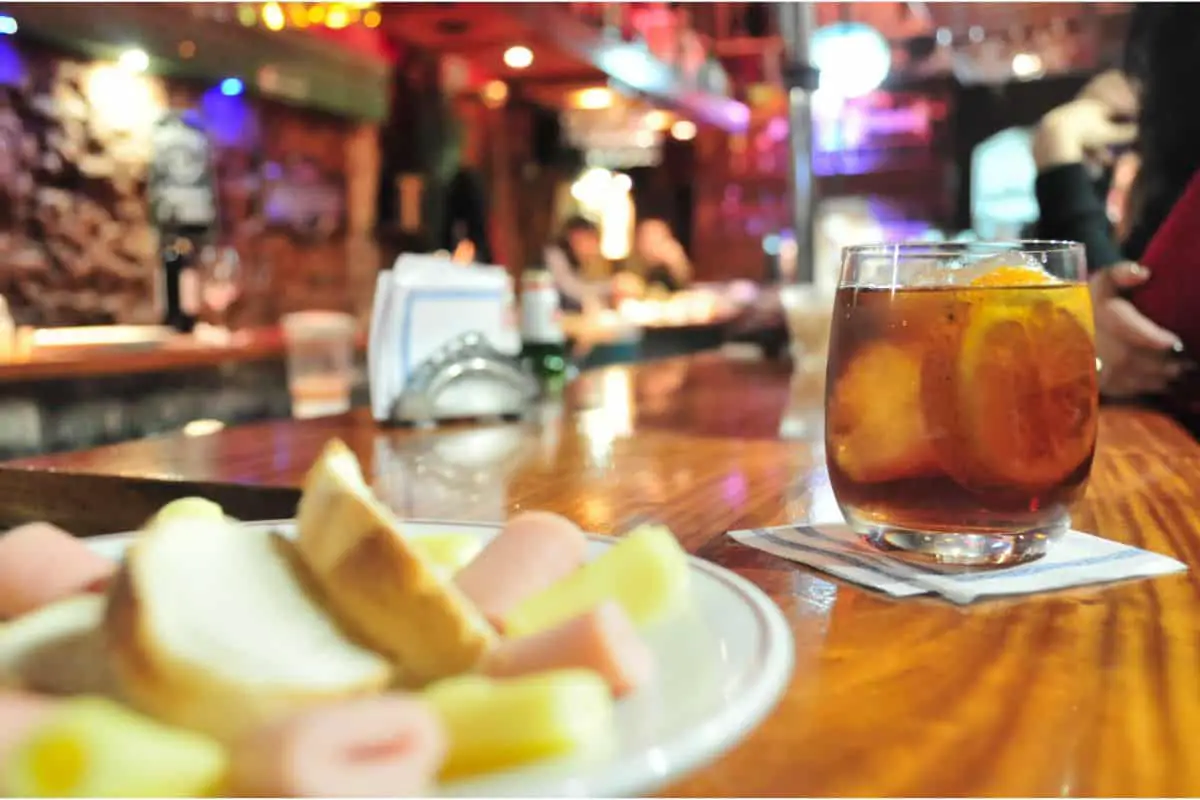If you’re a fan of cocktails or a fiend for mojitos, then you may have seen different types of vermouth come up again and again in the ingredients.
If you have, then you have probably been wondering what exactly this “vermouth” drink is.

It certainly seems to have range, being able to be added to a whole load of different types of drink without ruining the flavor. But what is it?
Well, we’ve got the answers for you. In our helpful guide below, you’ll find out all about vermouth – including what it is, what it’s used for, and how the different kinds. Read on!
What Is Vermouth?
To begin with, let’s answer the key question. Vermouth is a fortified wine, which means that it’s a wine that has had a distilled spirit added to it (this distilled spirit is usually brandy).
Fortified wines have a slightly higher alcohol content than wines that are not fortified.
On top of that, vermouth is an aromatized fortified wine, which means that it has been flavored with spices and herbs, as well as fruit, all to give it an extra kick.
As we’ve mentioned before, vermouth can be used as an ingredient in lots of different types of cocktails.
It was originally added to these as a way to lower the alcohol content, but since then it’s gained a lot of popularity for its flavor additions and the aromatic scent that it adds.
Additionally, however, vermouth can be drunk on its own. This is actually how it was consumed before it was even used as a cocktail ingredient – and before that it was used for medicinal purposes!
When drunk on its own, vermouth is an apéritif. This is the name for a drink that is served before a meal, and they are usually dry instead of sweet.
However, you can get sweet vermouth too, which we’ll go into soon…
How Is Vermouth Manufactured?
To begin making vermouth, a manufacturer will start with a base. This base can be either of a neutral grape wine, or it can be an unfermented wine must.
Once they have the base, they then add additional alcohol to it, as well as a mixture of other dry ingredients.
These other ingredients are the kind of things we mentioned earlier, like aromatic herbs and roots, but also include barks – yes, like trees!
Sometimes these additions won’t just be added to the base wine, but a combination of the base and a spirit, or simply just the spirit.
Those ingredients will then aromatize the base, while the base is also fortified with a distilled spirit. After those stages are done, the vermouth is then sweetened.
The manufacturer does this by either adding caramelized sugar, or by adding cane sugar.
Sweet And Dry Vermouth

There are two key types of vermouth that you can buy, and that’s sweet and dry.
However, due to the increased popularity and demand of vermouth, some manufacturers have started to create new styles on top of these. These include sweet white, amber, red, extra-dry, and many more.
Sweet Vermouth
This is, obviously, much sweeter in its profile than the dry vermouth. However, it isn’t as sweet as sweet liqueurs that you can get, such as a delicious amaretto, and features up to 15% sugar.
It goes by other names like red vermouth due to its red color tint, or Italian vermouth due to many of them coming from Italy.
With that being said, red is not the only shade that you can get, as white sweet vermouths are also available.
On top of its sweeter profile, a sweet vermouth also has a vanilla type aroma, with hints of spice. This makes it a good pairing with whiskey or brandy, the darker spirits.
Dry Vermouth
This type carries a dry flavor profile. Far from sweet, it contains only 5% sugar, and often has a clear color to it – or very pale yellow.
Due to this color, it is also often known as white vermouth. Sometimes, however, it is referred to as “French vermouth”, which is because many are produced there. For pairings, a dry vermouth is best put with gin.
Flavor Profile
A sweet vermouth can vary in its taste, because there are lots of varieties, but most will tend to have a medium-bodied flavor profile.
On top of that, it will have hints of its many ingredients: dark fruits, cocoa, herbs, spice, vanilla, etc.
Additionally, it has some tannins in it, which are bitter chemical compounds that come from nature, and likely come from the inclusion of bark in making the vermouth.
On the other hand, a dry vermouth also varies across the many different varieties. However, most will have a light-bodied flavor, with a nose that is fruity, floral, and herbal. They are low in tannins and have a very dry finish to them.
How To Store Vermouth
If you want to store your vermouth properly, you should put it in the fridge. This is because keeping it cold will help the vermouth keep its flavor for longer, which is what you want.
Like a bottle of wine, once you open a bottle of vermouth then oxygen will get to it. Over time, this will make it lose its flavor.
This can’t be stopped, but it can be slower through proper cold storage. Your vermouth should taste good for about 3-6 months, and after that it’ll just taste a bit less refined – it won’t go off or foul.
Making Cocktails
Vermouth is an essential ingredient to many hit cocktails. For example, a martini is made from just gin and a dry vermouth. Meanwhile, if you want a dry martini then use less vermouth.
Final Thoughts
As you have seen, vermouth works great as an apéritif or as a cocktail-ingredient.
- How to Learn Wine Tasting: Essentials for Beginners - March 10, 2024
- How to Learn to Like Wine: Cultivating an Appreciation for the Vintner’s Art - March 10, 2024
- Thanksgiving Sangria: A Flavorful Twist to Your Holiday Table - August 27, 2023
